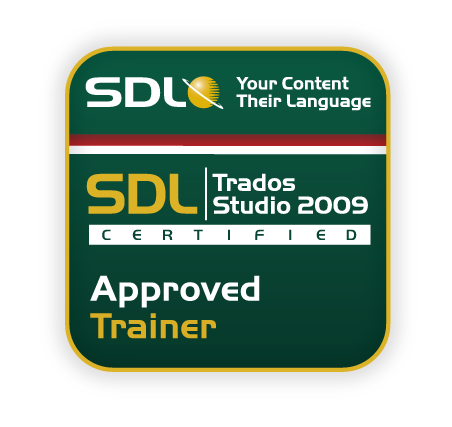 My presentation last week at the ATA conference was well received and I got a lot of positive feedback and had interesting discussions with many Trados users afterwards. I wanted to summarize the main points of the presentation here for those of you who weren’t there. You can download the presentation slides from here. The presentation will also be available through the ATA eConference.
My presentation last week at the ATA conference was well received and I got a lot of positive feedback and had interesting discussions with many Trados users afterwards. I wanted to summarize the main points of the presentation here for those of you who weren’t there. You can download the presentation slides from here. The presentation will also be available through the ATA eConference.
First of all, Trados Studio offers several very good new features that make translation work faster and more efficient, such as the possibility to use multiple TMs, AutoSuggest feature, improved interface with MultiTerm, display filtering, Context Match concept, almost tag-free editing environment, real-time word counter, wider selection of supported file formats, SDL Exchange program and easier project management. These are all features that in my opinion make it worth upgrading to Studio in most cases.
However, there are also some downsides that one should take into consideration when deciding whether to migrate or not. These are mainly compatibility-related issues, such as the lack of support for bilingual (uncleaned) Word files and the extra work one needs to import/export TMs between Studio and Trados Workbench, particularly if one needs to use both versions regularly. Other downsides include the learning curve, the restrictions on using TMs of different language variants in the same project, inability to edit source segments and the lack of (functioning) Finnish spell checker.
 Based on the user survey (154 responses) I did, the most common reason why Trados users haven’t started using Studio yet is that their clients haven’t asked them. I find that a strange reason – you don’t need to wait for your clients (or anyone else for that matter) to tell you to start using a new, more efficient tool. How about showing some of your own initiative? I would say that the only situation where Studio doesn’t work that well is if you need to deliver uncleaned Word files to most of your clients. Sometimes I translate projects like these first in Studio and then retranslate them in Word using the same TM content, because that allows me to utilize all those Studio features I mentioned above, but I do admit that this is not always the most practical way of doing it. However, before giving up Studio because of the Word file issue, check that your client really needs those uncleaned files and wouldn’t be happy with just the translated monolingual file and TM. The upcoming SDLX Converter application (I wrote more about it in my earlier posting) will definitely be helpful in some of these scenarios where one needs to work with non-Studio users but it does not completely eliminate the need for a filter that would allow us to convert SDXLIFF files to the traditional “uncleaned” Word format and back. Hopefully, both of these options will be available soon.
Based on the user survey (154 responses) I did, the most common reason why Trados users haven’t started using Studio yet is that their clients haven’t asked them. I find that a strange reason – you don’t need to wait for your clients (or anyone else for that matter) to tell you to start using a new, more efficient tool. How about showing some of your own initiative? I would say that the only situation where Studio doesn’t work that well is if you need to deliver uncleaned Word files to most of your clients. Sometimes I translate projects like these first in Studio and then retranslate them in Word using the same TM content, because that allows me to utilize all those Studio features I mentioned above, but I do admit that this is not always the most practical way of doing it. However, before giving up Studio because of the Word file issue, check that your client really needs those uncleaned files and wouldn’t be happy with just the translated monolingual file and TM. The upcoming SDLX Converter application (I wrote more about it in my earlier posting) will definitely be helpful in some of these scenarios where one needs to work with non-Studio users but it does not completely eliminate the need for a filter that would allow us to convert SDXLIFF files to the traditional “uncleaned” Word format and back. Hopefully, both of these options will be available soon.
If you have already upgraded but are still hesitant about using Studio, learn more about its features and start using it. Investing in learning to use it efficiently will pay itself back quickly. If you haven’t upgraded yet, find out more about Studio from other users (users that are using the latest Service Packs), SDL webinars, videos, tutorials, and testing the trial version. If you like it, review the potential incompatibility issues to see how well Studio would fit into your project flow situations and if any changes are needed. With all that information, you should be able to make a good and educated decision about whether or not to migrate to Studio now
 I promised last week at the ATA conference in Boston that I will post a summary of my presentation here. You can download the slides with some additional notes by clicking the image on the left. The presentation will also be available through the ATA eConference.
I promised last week at the ATA conference in Boston that I will post a summary of my presentation here. You can download the slides with some additional notes by clicking the image on the left. The presentation will also be available through the ATA eConference.





